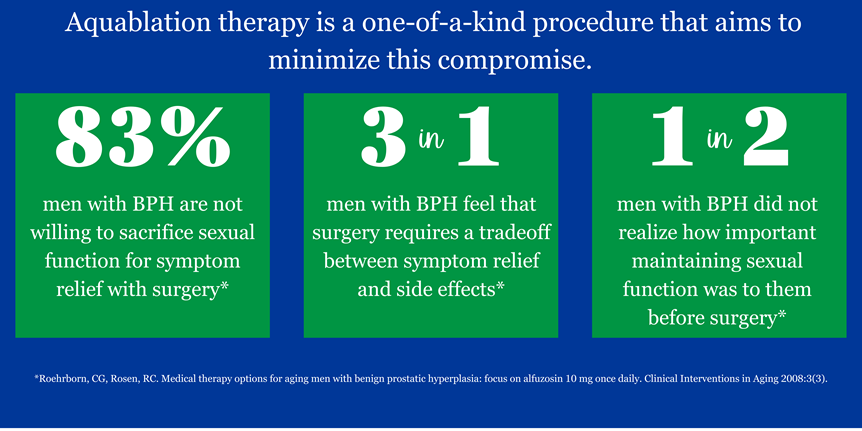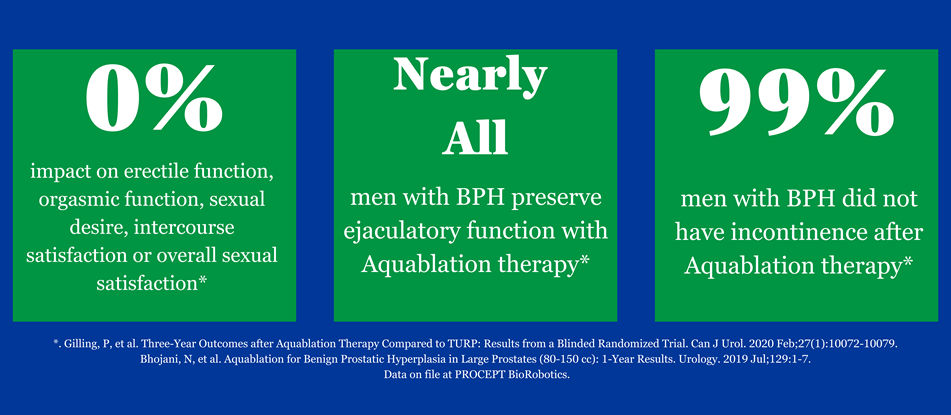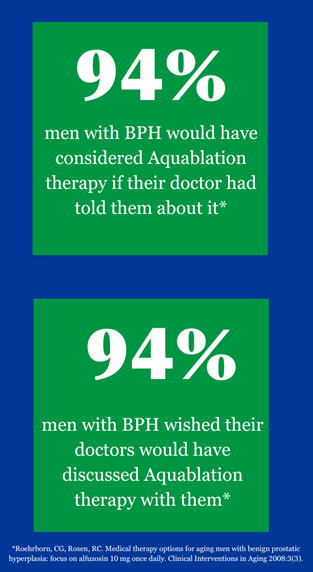Frequently Asked Questions
Who performs Aquablation therapy surgery?
A urologist on the medical staff of Texas Health Center for Diagnostics and Surgery performs Aquablation therapy using the AquaBeam Robotic System. The procedure takes place in the hospital.
Is Aquablation therapy FDA approved?
Yes, Aquablation therapy is performed using the AquaBeam Robotic System, which was cleared by the FDA in
December 2017.
Who is an appropriate candidate for Aquablation therapy?
Aquablation therapy has been proven as a safe and effective treatment for BPH patients suffering from lower urinary tract symptoms which affect the bladder, prostate, and urethra and impact the ability to hold urine and empty the bladder. Aquablation therapy can treat prostates of any size and shape. Patients should consult with their urologist directly to determine if they are an appropriate candidate.
What happens immediately after the Aquablation therapy?
As with most BPH procedures, patients will wake up with a catheter following Aquablation therapy, which allows them to urinate while their urethra heals. Patients typically stay overnight in a hospital, which allows most patients to go home without a catheter, regardless of the size or shape of their prostate.1,2,3
What are Aquablation therapy’s clinical results?
Aquablation therapy has been validated by a robust clinical program in seven different clinical trials. It has been shown to provide best-in-class and long-term symptom relief with low rates of irreversible complications, regardless of prostate size or shape.1,2
What are the risks associated with Aquablation therapy?
The most common side effects are mild and transient and may include mild pain or difficulty when urinating, discomfort in the pelvis, blood in the urine, inability to empty the bladder or a frequent and/or urgent need to urinate, and bladder or urinary tract infection. Other risks include ejaculatory dysfunction and a low risk of injury to the urethra or rectum where the devices gain access to the body for treatment. In clinical studies, men who had Aquablation therapy had a very low rate of irreversible complications—incontinence, ejaculatory dysfunction, erectile dysfunction. 1,3 Individual results may vary.


